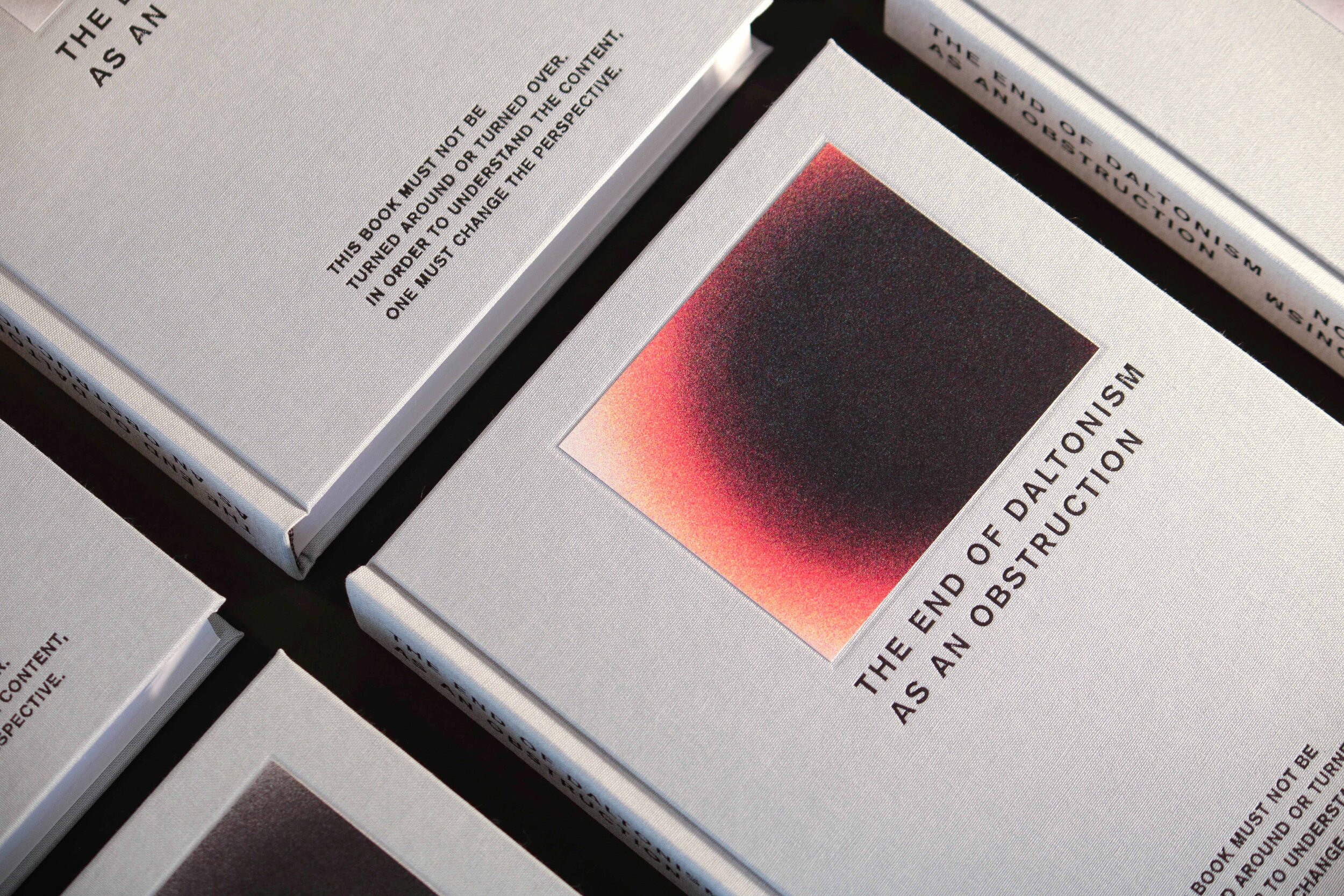
The end of daltonism as an obstruction
MASTER THESIS
HEAD Geneva
Tutor : Jérémie Cerman
2020
Images © HEAD — Michel Giesbrecht
The thesis The end of daltonism as an obstruction analyzes how daltonism in the artistic work process has changed in a way that it is not perceived as a hindrance anymore when working with colors. The work aims to reveal how color-blindness affects the creation of artistic work, the instruments artists use to deal with their color impairment, the extent to which appearance and acceptance of color blindness in art have changed from the past to the present and whether daltonic art has successfully integrated itself into art history.
For the conceptualization of the book, the expression „visual parallel realities“ from the thesis was used as a conceptual baseline with the idea to depict the differences in visuality of the daltonic artist case studies.
For this purpose the entire content was mirrored so that the book can be read from both sides. One side represents the view of a normal sighted person, while the other side reflects the view of the daltonic artists by depicting the images in the way the artist analysed in the thesis perceive them. A visual division like this offers the reader the possibility to gain another access to these images and to further understand the artistic struggle of not perceiving colors in the same way others do. This book has not been conceived with a front- or backside, both sides represent a reality, but neither is more correct than the other.
The text on the cover functions as a condition on how this book has to be read. It indicates that this book cannot be turned over from the middle onwards. In order to be able to read and acquire the reverse part, the viewer has to change position to the other side, and thus change his perspective. He is not presented another person’s sight, but is directly asked to physically change his view and adopt that of someone else.













